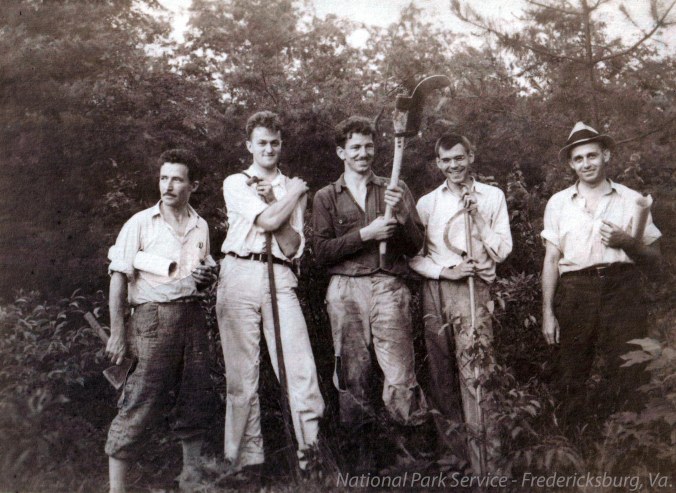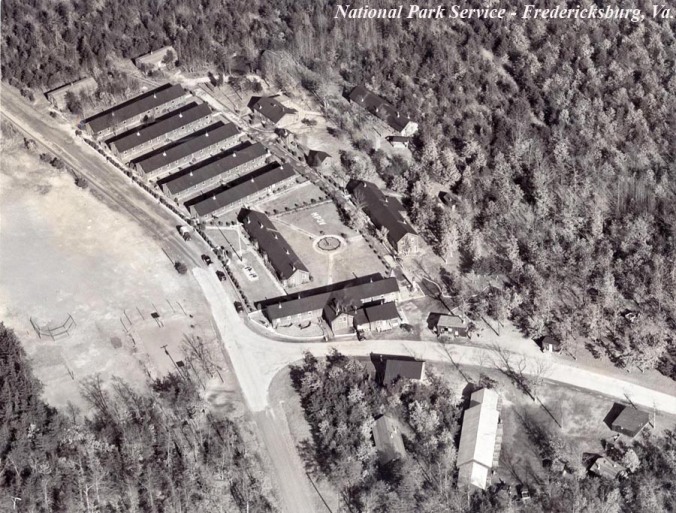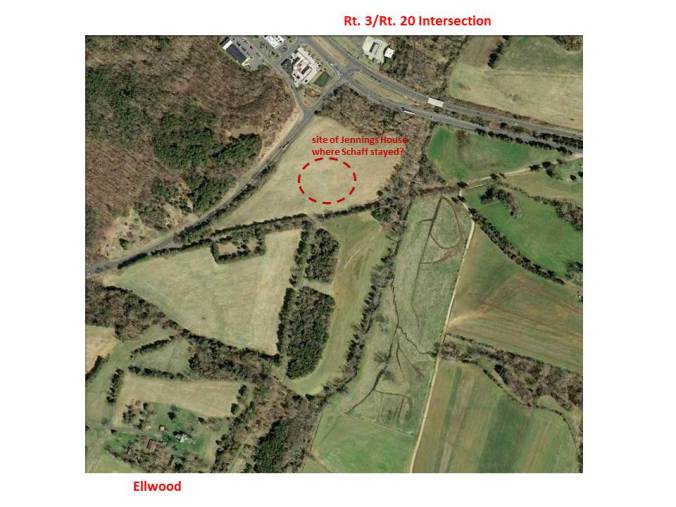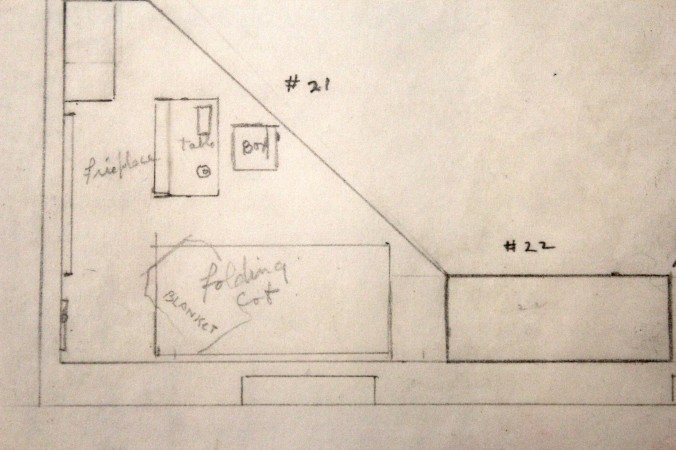From Eric Mink:
During the National Park Service Centennial last year, the park staff delved into a bit of research on our own history. We looked at how our predecessors laid the groundwork, both in infrastructure and in historical research, upon which we have benefited and continue to build. The park had the advantage of a strong cadre of historians who conducted some of the first solid research on the park’s battles and resources. Ralph Happel is a name known to most who have studied the Civil War activities around Fredericksburg, but there was also T. Sutton Jett, Branch Spalding, Hubert Gurney, just to name a few. For about six years in the late 1930s, the park benefited from having as its chief of historians Edward Steere, a man whose combined knowledge and skills as a journalist, a soldier, and a historian resulted in a report that became the first in-depth battle study of the 1864 Overland Campaigns first engagement. Steere’s The Wilderness Campaign remains a popular resource for students of the battle.

Edward Steere (far left) and other National Park Service historians on the Wilderness Battlefield in 1935. To Edward’s left are: T. Sutton Jett, Raleigh C. Taylor, Ralph Happel, and Branch Spalding.
Born in Los Angeles, California on April 21, 1889*, Edward Steere entered a military family. His father, Captain Henry Steere, participated in the Spanish-American War with the 1st Battalion California Heavy Artillery and then in the Philippine Insurrection with the 36th United States Volunteers. Captain Steere later pursued a career in education as both professor of military tactics and commandant of cadets at the Western Reserve University of Cleveland, Ohio, and even later in a similar role at the Shenandoah Valley Military Academy in Winchester, Virginia. Edward’s older sister Ruth married three times, each to an officer in the United States Army. Her first two husbands were medical officers, while her third husband, Colonel Reginald Heber Kelley, commanded the 116th United States Infantry during the Meuse-Argonne Offensive in 1918. Edward’s younger brother John entered the United States Army and rose to the rank of colonel. Perhaps it was the military tradition, a sense of adventure, or even personal convictions about the war in Europe that led young Edward to leave the United States and enlist in the Canadian Army on September 23, 1914, at the age of 25. Steere joined “B” Battery, Royal Canadian Horse Artillery and over the following four years he served with his unit in France, presumably taking part in all of its battles. His service record notes little, other than three instances in which he ran afoul of his superiors. The first involved “altering the duration of his watch,” the second punishment came for “using insubordinate language to his superior officer,” and the final instance involved “galloping a horse on a hard road.” Dismissal at the expiration of his service came on May 31, 1919, at which time Steere returned to the United States to pursue an education for a civilian career.
Steere’s college pursuits prepared him well for his future vocation as a historian. He attended the University of Texas and received a bachelor’s degree in journalism in 1924 and a master’s in history in 1929. After a stint writing for the Dallas Morning News and the Austin Statesman, Edward landed a job with the National Park Service, working out of the agency’s Washington, D.C. office. The War Department transferred its battlefields and military parks to the National Park Service in 1933, and around that time Steere joined the staff of the Fredericksburg and Spotsylvania National Military Park. He arrived in Fredericksburg as an assistant historical technician, but within five years he rose to the position of “chief historian,” overseeing the park’s historical research and public programming. His largest contribution while stationed at Fredericksburg was his research on the Battle of the Wilderness. The result of that research has benefited historians for decades.

Edward Steere – Fredericksburg Battlefield, 1938
Steere began his study of the Battle of the Wilderness shortly after arriving in Fredericksburg and finished both the research and writing of his manuscript in 1937. Steere’s “The Campaign of the Wilderness, May 2-7, 1864” was intended as an internal document to educate the park staff. Steere utilized the small park library, and with a few small exceptions, he relied entirely upon published sources, specifically the Official Records. Prior to his research, a truly analytical look at the Wilderness did not exist. Andrew Humphreys’ The Virginia Campaigns of ’64 and ’65: The Army of the Potomac and the Army of the James (1883) and Morris Schaff’s The Battle of the Wilderness (1910) both represented studies written by participants, but each lacked the distance and analysis of a historian. Steere’s familiarity with the ground and his painstaking analysis of the source material resulted in a 650-page typed manuscript. It is likely that his manuscript would have remained on the park’s library shelf and out of sight from anyone other than park staff had it not been for an inquiry from soldier and publisher Lieutenant General Edward Stackpole, Jr. two decades later.














